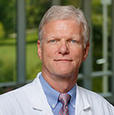Students undergo a conversion in the third year of medical school: not “pre-clinical” to “clinical,” but “pre-cynical” to “cynical.”
— Abraham Verghese, MD
The scalpel hovered over the swollen, red and inflamed mass peeking through the opening in the sterile drapes. The patient lay on her side facing away from us, clutching the stiff emergency room pillow against her face and moaning as she rocked back-and-forth. Whenever the surgeon manipulated the mass, she yelped. I was a brand new medical student observing my first incision and drainage of a perirectal abscess. The surgeon sat on a rolling exam chair next to the patient’s bed and peered at me over his mask. “You have two jobs: hold her in a position so I can get to her rectum and then get a culture of the contents once I open this thing up.” This was all new to me. I nodded.
The surgeon held his gloved hands at the ready and spoke distinctly to the back of the patient’s head. “Okay,” he said, “you might feel some pressure.” He pressed the mass again until he located the best point of entry. I had recently attended a Microbiology lecture and knew that I would need to place the sample of pus into the culture media quickly. I adjusted the exam light as I pressed against the patient’s leg to expose the area. I held the culture swab at the ready. The distance between the scalpel and the abscess closed. Without knowing it at the moment, I was about to learn several enduring lessons.
The knife broke through the skin. As abscess opened, it released an overpowering stench that was worse than anything I expected. I recoiled as pus burst through the drapes. My eyes burned as the surgeon glanced at me with what I assumed was amusement. “Here,” he pointed. “Get the culture.” He completed the procedure, took care of paperwork, chatted with the nurses, and left.
Over the years, I learned many lessons in the clinic, at the bedside, and in the operating room that I could have learned in no other way except by being present when they happened. Serendipitous, formative moments are common to the experience of all medical students and physicians, yet because of their spontaneity, they are not part of the written curriculum.
The day I watched the incision and drainage of the perirectal abscess in the emergency room, I realized for the first time that pus in an abscess cavity can exist under pressure. I understood that it is possible for a person to scream in pain and then say, “Thank you! OH, THANK YOU!” with the same breath. I developed an indelible association between a mixed bacterial abscess and the word “putrid.” And it took me years to un-learn that when a surgeon notices a student’s distress, it is apparently just fine to smirk, say nothing, and go on your way.



